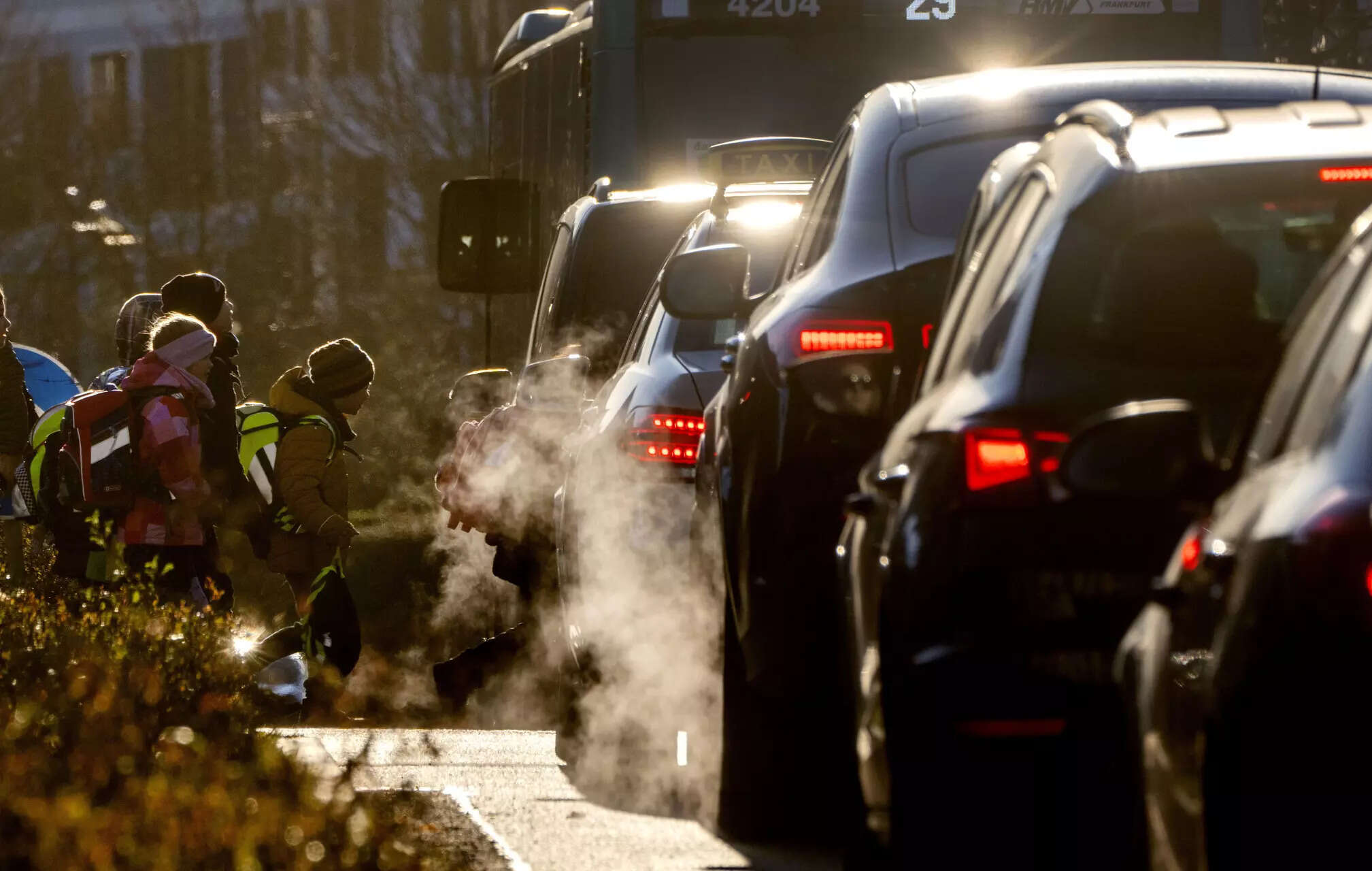
Electric vehicles promise cleaner air and less climate pollution. But a new analysis suggests that even a global all-EV fleet would perpetuate some of the most devastating impacts of cars and auto infrastructure.
The modern world moves itself around in roughly 2 billion motor vehicles, 65% of which are cars. That’s 16 automobiles for every 100 people, but the rate of car ownership is much higher in richer industrialized countries, where cars give shape to cities and set the patterns of daily life. This fleet requires substantial, ongoing investment in roads and highways, car storage (or “parking,” in the jargon), oil exploration and fuel production, metals mining and manufacturing, insurance and much more.
All of these activities levy regular costs in the form of fatalities and injuries as well as greenhouse gas emissions that cause climate change. A comprehensive review published last month provides a litany of what the authors call “car harm,” in estimated global totals of death, injury, disease and other miseries, over the course of automotive history. In part because the system “prioritises speed over safety,” as the authors put it, motor vehicles are responsible for one out of 34 deaths, or 1.7 million people every year, either directly or through pollution.
“It’s quite a grim paper,” acknowledged lead author Patrick Miner, a PhD candidate at the University of Edinburgh, whose dissertation focuses on how car culture influences urban land use.
It took Miner two-and-a-half years to survey roughly 400 papers covering everything from noise pollution, to cumulative deaths (60 million to 80 million), to injuries (2 billion), to oil’s 35% contribution to historic fossil-fuel and cement emissions. These are conservative estimates, he and his co-authors write.
The motivation for the study came out of a simple need, Miner said. When speaking with peers or policymakers about the violence built into the transportation system, “it’s helpful to have one document that you can point people to,” instead of dozens across many disciplines. “That was the impetus for this paper.”
The report concludes:
In 2019, 43% of people killed by motor vehicles were walking, using a wheelchair or riding a bike.
Motor vehicles kill more than 700 children a day. Traffic deaths occur at the highest rates in Africa and Southeast Asia, and, in the US and Brazil, crashes disproportionately kill Black and Indigenous people.
SUVs, which make up nearly half of car sales globally, are eight times more likely than traditional cars to kill children.
Traffic-related air pollution is linked to circulatory and heart disease, lung cancer, asthma and, according to a cited study, “acute lower respiratory infections in children.”
Other car harms include drunk driving, drive-by shootings, carbon monoxide poisoning and, in the US, traffic stops that “are a setting for police violence against Black, Latine/x, and Indigenous people,” they write.
Access to oil has played a role in a quarter to half of wars between countries since 1973.
The electric car, a juggernaut of the energy transition, “fails to address a majority of the harms,” they write, including crashes, sedentary travel, inequality and cities designed more for cars than people.
EVs cause less greenhouse gas pollution than combustion cars — their headline benefit — but also promise inertia when it comes to aggregated small-scale dangers. Swapping engines for batteries isn’t changing how much cities pave themselves to accommodate cars, and or how cars kill people, the authors write. Although their tailpipes don’t spew carbon monoxide, they are often heavier than their internal-combustion counterparts, which means more fine-particle pollution from tires on highways.
The analysis builds on a framework for thinking about mobility justice put forward years ago by Mimi Sheller, a sociology professor who’s dean of the Global School at Worcester Polytechnic Institute, and her late colleague John Urry. Violent deaths, illness, inaccessibility and the other harms affect communities to wildly varying degrees, and spotlighting these inequalities should be central to policymaking, she has written.
Sheller, who wasn’t involved in the new research, said that the authors developed a way to incorporate voluminous data into her framework.
The review ends with a nod toward “existing interventions that are already reducing car harm.” The authors list nine practices that would address many of the local consequences; many are already in effect or on their way in various cities. In the US, Sheller’s city Worcester, Massachusetts, launched a Vision Zero campaign to reduce car-related deaths and major injuries to zero. It’s part of a national network that also includes New York City (launched in 2014); Tampa, Florida; Albuquerque, New Mexico; Columbia, Missouri; and Eugene, Oregon. Bike-sharing services are common in hundreds of places. New York is the first US city to begin an experiment with congestion pricing.
Yet despite these efforts, there’s still a very long way to go: Pedestrian deaths in the US reached a 41-year high in 2022. And more than half of spending from the 2021 US Infrastructure Investment and Jobs Act is going toward expanding and resurfacing highways, with only 20% for public transit and rail, according to a recent analysis by Transportation for America, an advocacy group.
To increase awareness that car harms are “systematically built in and statistically expected to happen” in car-centric modern environments, even our language matters, Sheller said. Safe-streets advocates have called to retire the phrase “car accident” and use “car crash” instead, and to avoid the passive voice when describing crashes.
“You don’t say, ‘A person was hit by a car’,” said Sheller. “You say, ‘A driver crashed into a bicyclist, killing them.’ Make it the active voice. Identify the subject — who’s doing it.”

